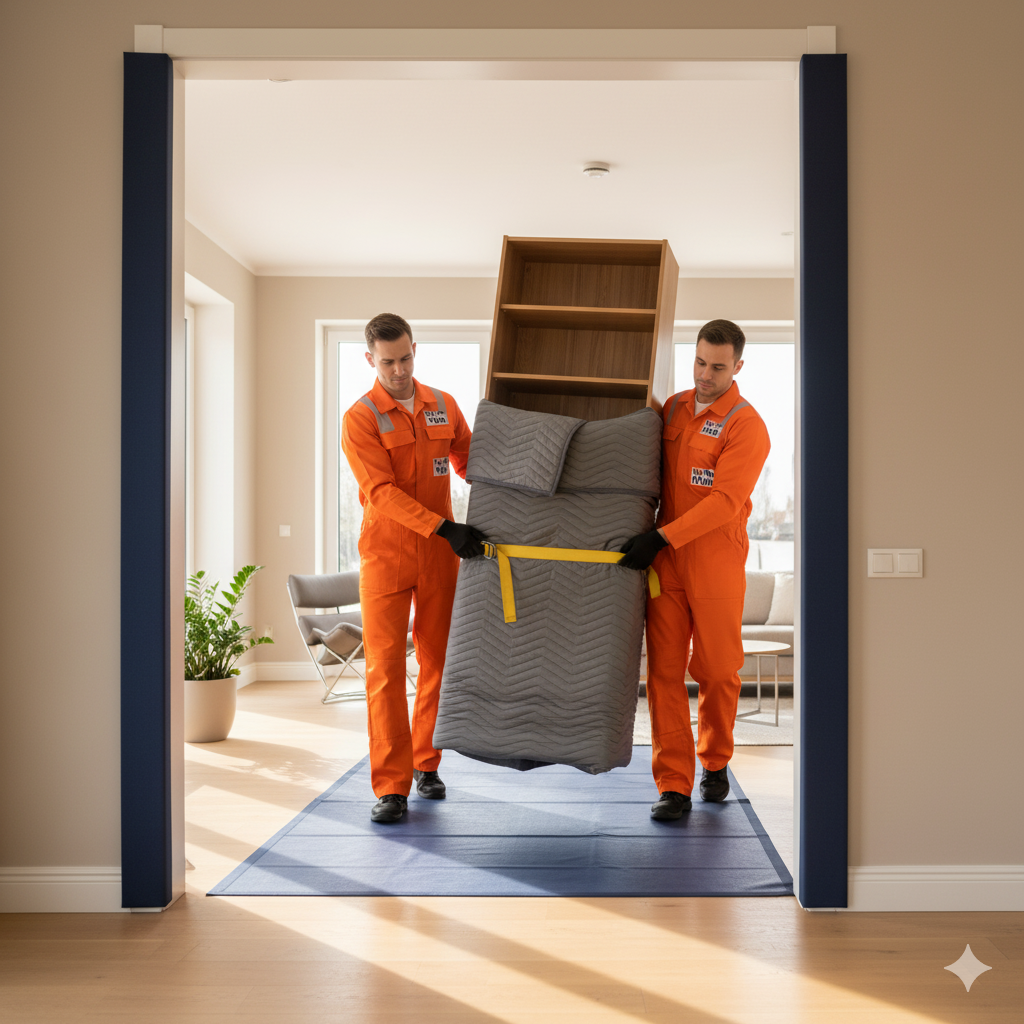How to Move Heavy Furniture Safely Without Causing Damage?

Moving heavy furniture can be risky. You do not want scratched floors, dented walls, or injuries. The good news, you can move heavy pieces safely with the right plan, tools, and careful technique. If you need help in DC, Maryland, or Virginia, Two Men and Van is licensed, insured, and ready with written estimates.
Step one: Plan and Measure
Measure doorways, stairwells, and hallways first. Remove rugs, clutter, and obstacles. Plan your path from room to truck or room to room. Remove shelves, glass panels, and loose pieces. A clear plan prevents damage and saves time.
Tools That Prevent Damage
The right tools reduce risk and effort. Keep these on hand:
- Furniture sliders: Protect hardwood and tile, reduce friction
- Moving blankets and stretch wrap: Prevent scuffs and protect corners
- Lifting straps or forearm forklifts: Improve leverage, reduce strain
- Dollies and hand trucks: Secure tall or heavy items for safer rolling
- Corner guards and door jamb protectors: Shield walls and trim
- Tape, zip bags, and labels: Keep hardware organized for reassembly
Safe Lifting and Carrying Techniques
Use your legs, not your back. Keep the load close to your body. Communicate countdowns with your partner before lifting. Lift in stages if needed, set items down slowly, and rest when you need to. Wear closed-toe shoes and gloves for grip and safety.
Protect Floors, Walls, and Doorways
Lay runners or blankets along high-traffic paths. Use sliders for hardwood and tile. For stairs, pad railings and posts. Wrap sharp furniture edges to avoid dents. Use corner guards on tight turns. If the piece is too big, disassemble it to reduce risk.
Disassemble Smartly to Reduce Risk
Remove legs from tables and sofas when possible. Take drawers out of dressers. Label parts and place hardware in labeled bags taped to the item. Shorter, lighter components are easier to carry and much safer through tight areas.
How to Move Common Heavy Items
- Sofas and sectionals: Stand on end if needed, wrap corners, remove feet
- Dressers and armoires: Remove drawers, shrink wrap to keep doors closed
- Dining tables: Remove legs, blanket and wrap the top
- Bookshelves and cabinets: Empty first, carry upright to keep structure stable
- Appliances: Use an appliance dolly, strap tightly, protect floors and doorways
For small furniture moves, expect a two-person crew and a 2 to 3 hour minimum, availability varies by time of day and location. Written estimates provided on request.
If you recently bought new furniture and need professional help setting it up, our trusted partner, All Pro Assemble provides expert assembly and installation services for heavy and complex items, including:
- Bedroom Sets
- Nightstands
- Dressers & Wardrobes
- Sofas & Sectionals
- Dining Tables & Chairs
- Coffee Tables
- Bookcases & Shelving
Their professional assemblers ensure every piece is securely installed, leveled, and ready to use, saving you time and preventing damage during or after your move.
When to call professionals
If your route includes tight stairwells, steep steps, or fragile floors, call insured movers. If you have antique or high-value furniture, ask for padded protection. In DC, Maryland, and Virginia, Two Men and Van can also help with elevator reservation timing and building access rules.
Frequently Asked Questions About Moving Heavy Furniture
How can I protect walls and door frames?
Use corner guards and door jamb protectors. Wrap sharp edges on furniture and take wider turns. Disassemble large pieces to reduce contact points.
What should I do before moving day?
Measure paths, clear obstacles, gather sliders and blankets, and disassemble large items. Label parts and prepare a safe route to avoid damage.
How do I move a heavy couch without scratching hardwood floors?
Use sliders or moving blankets under each corner, lift with your legs, do not drag directly on the wood, and clear your path before lifting.
Do I need to remove dresser drawers before moving?
Yes, remove drawers to reduce weight and prevent damage. Wrap the body with blankets and stretch wrap, and label drawers for easy reassembly.
What is safer, lifting or using a dolly?
Use a dolly whenever possible. Save lifting for short transfers, keep the load close, and communicate with your partner to avoid sudden shifts.
Do you provide insurance and written estimates?
Yes. Two Men and Van is licensed and insured. We provide written estimates and clear scopes before work begins for your peace of mind.

